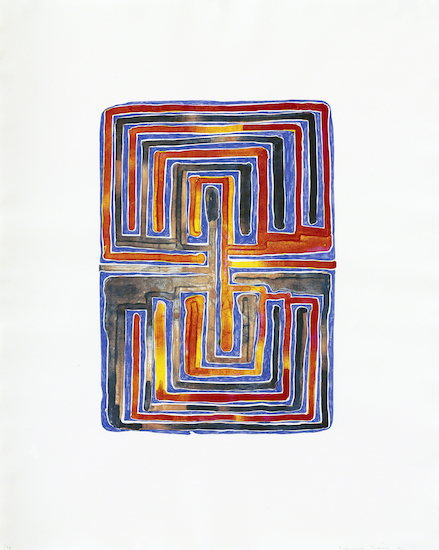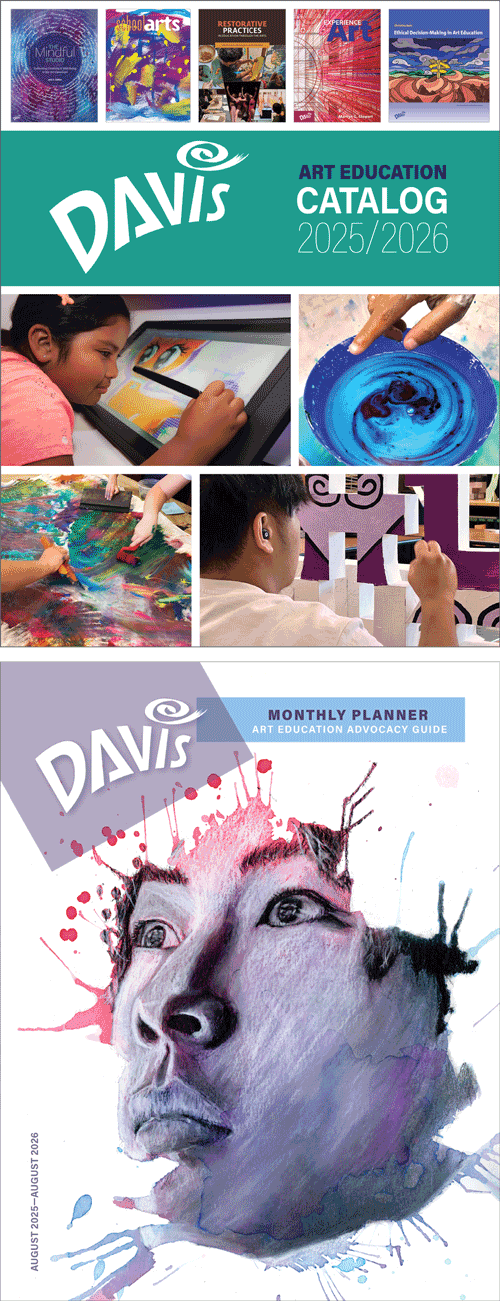Artist Birthday: James Siena
James Siena is renowned for his intricate, circuit board-like geometric abstractions. Like many contemporary abstractionists, Siena follows a highly personal process in his colorful abstractions.
Artist Birthday for 29 October: James Siena (born 1957 US)
 |
| James Siena, Who’s Afraid of Barney?, 2006, color lithograph on paper, 58.6 x 46.7 cm The Museum of Modern Art, New York, © 2025 James Siena (MOMA-P4140) |
While attending Cornell, Siena was influenced to undertake printmaking after seeing an exhibition of prints by Jim Dine (born 1935). Siena has since made more than 150 editions of prints in various media. In his prints, paintings, drawings, and sculptures, Siena responds to a set of predetermined instructions that he calls visual algorithms. While the algorithms provide structure, Siena embraces the unpredictability inherent to his freehand approach: he draws repeating lines, irregular grids, and interlocking shapes without the aid of a ruler or other mechanical device. The jewel-like work Who's Afraid of Barney is indicative of Siena’s sophisticated understanding of color theory. The title Who's Afraid of Barney? is a direct relation to the 1968 painting by Frank Bowling (born 1934) called Who's Afraid of Barney Newman? (https://www.tate.org.uk/art/artworks/bowling-whos-afraid-of-barney-newman-t12244 ) in which Bowling explored the color field and zip lines in the painting of Abstract Expressionist Barnett Newman (1905-1970).
Background
Abstraction in the 1900s ran the gamut from objective (Cubism) to non-objective (de Stijl), from organic (Biomorphic Surrealism) to geometric (Hard Edge), from subjective (Abstract Expressionism) to analytical (Minimalism). Postmodernism and Neo Expressionism, in the last two decades of the 1900s, reasserted figuration into contemporary art, much of it based in ideological, social or historical narrative. Abstraction in the 21st century has combined elements from all of its previous incarnations, including highly personal and informed vision.
In the 21st century, the vocabulary of modernism—e.g. abstraction—is international. Minimalism and Op Art, trends in painting that began in the 1960s, have recurred repeatedly throughout the late 1900s and early 2000s. And yet, very seldom is it a reduction of form merely for reduction’s sake, or as a statement against the excesses of agitated brush stroke and build up of paint in previous styles (say, for example, Neo Expressionism). Many contemporary artists who work in Minimalist, Geometric or Op styles attach spiritual and contemplative meaning to their work. Already before the end of the 1980s -- a period when there were premature predictions by some critics that painting and abstraction in general had exhausted their ability to surprise -- many artists whose names were already key to the unfolding narrative of abstraction in the new millennium began new phases of their work.
James Siena was born in Oceanside, California, but grew up in Washington DC until he was 12, when his family returned to California. As a young man he was interested in being an artist. He credits a high school after-school art teacher as a major influence of his development, because she treated her students as fine artists, teaching them all the basics. Although initially inclined towards illustration, he ended up attending Cornell University in Ithaca, NY, where he earned a BFA in 1979. While at Cornell Siena studied painting, printmaking, anthropology and art history.
In 1982 Siena moved to New York, where, while continuing to paint, he early on became involved in performance art, and worked in a framers' shop sanding frames and cutting mattes. The precision and compression required for that job can be seen in his artworks up to the present day. He had his first solo show in New York in 1996.
Siena's works have been compared to "circuit boards" or "passages." He calls his works "two-dimensional machines". He executes his work with a predetermined set of rules, although he often distorts these intricate systems in surprising ways. He does not consider his process to consist of "patterns", feeling that they are more derived from machines. The compression of subject, detail and intensity of his works are representative of his interest in exploring the "machinery" of seeing and thinking. When he creates a painting (or print), he claims he is responding to a set of parameters, like a "visual algorithm."

Comments